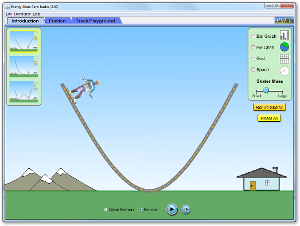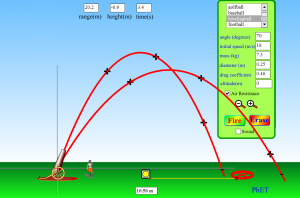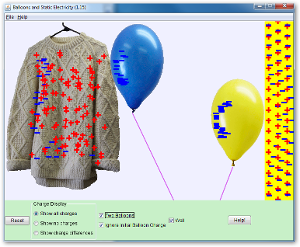PhET Simulations - http://phet.colorado.edu/
About PhET
PhET provides fun, interactive, research-based simulations of physical phenomena for free. We believe that our research-based approach- incorporating findings from prior research and our own testing- enables students to make connections between real-life phenomena and the underlying science, deepening their understanding and appreciation of the physical world.
To help students visually comprehend concepts, PhET simulations animate what is invisible to the eye through the use of graphics and intuitive controls such as click-and-drag manipulation, sliders and radio buttons. In order to further encourage quantitative exploration, the simulations also offer measurement instruments including rulers, stop-watches, voltmeters and thermometers. As the user manipulates these interactive tools, responses are immediately animated thus effectively illustrating cause-and-effect relationships as well as multiple linked representations (motion of the objects, graphs, number readouts, etc.)
To ensure educational effectiveness and usability, all of the simulations are extensively tested and evaluated. These tests include student interviews in addition to actual utilization of the simulations in a variety of settings, including lectures, group work, homework and lab work. Ourrating system indicates what level of testing has been completed on each simulation.
All PhET simulations are freely available from the PhET website and are easy to use and incorporate into the classroom. They are written in Java and Flash, and can be run using a standard web browser as long as Flash and Java are installed.
PhET provides fun, interactive, research-based simulations of physical phenomena for free. We believe that our research-based approach- incorporating findings from prior research and our own testing- enables students to make connections between real-life phenomena and the underlying science, deepening their understanding and appreciation of the physical world.
To help students visually comprehend concepts, PhET simulations animate what is invisible to the eye through the use of graphics and intuitive controls such as click-and-drag manipulation, sliders and radio buttons. In order to further encourage quantitative exploration, the simulations also offer measurement instruments including rulers, stop-watches, voltmeters and thermometers. As the user manipulates these interactive tools, responses are immediately animated thus effectively illustrating cause-and-effect relationships as well as multiple linked representations (motion of the objects, graphs, number readouts, etc.)
To ensure educational effectiveness and usability, all of the simulations are extensively tested and evaluated. These tests include student interviews in addition to actual utilization of the simulations in a variety of settings, including lectures, group work, homework and lab work. Ourrating system indicates what level of testing has been completed on each simulation.
All PhET simulations are freely available from the PhET website and are easy to use and incorporate into the classroom. They are written in Java and Flash, and can be run using a standard web browser as long as Flash and Java are installed.




